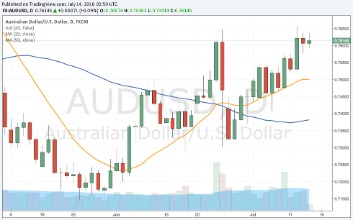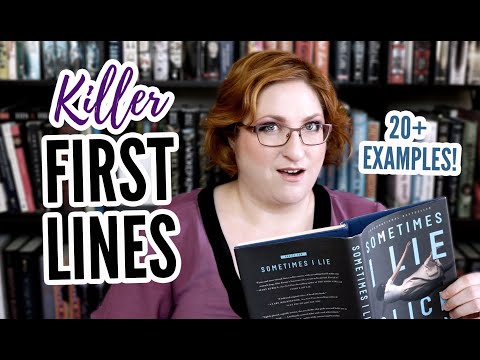Contents

Doji convey a sense of indecision or tug-of-war between buyers and sellers. Prices move above and below the opening level during the session, but close at or near the opening level. Neither bulls nor bears were able to gain control and a turning point could be developing. The real body should be at the top of the candlestick trading range.

- The name of the candlestick emerges from the word ‘hammer’ which is a common tool used to hit or strike, and consists of a thick but small metallic body and a relatively long handle.
- The candle looks like a hammer, as it has a long lower wick and a short body at the top of the candlestick with little or no upper wick.
- Determining the robustness of the doji will depend on the price, recent volatility, and previous candlesticks.
- If a trader follows the intraday opportunities on smaller timeframes , a Hammer pattern near the daily support may help identify a Buy entry.
Take Profit was set at a distance three times bigger than the one between the SL level and Buy Stop. A typical example of confirmation would be to wait for a white candlestick to close above the open to the right side of the Hammer. Both have cute little bodies , long lower shadows, and short or absent upper shadows. The hanging man is a bearish pattern which appears at the top end of the trend, and one should look at selling opportunities when it appears. The high of the hanging man acts as the stop loss price for the trade. The hammer is a bullish pattern, and one should look at buying opportunities when it appears.
Charts with Current CandleStick Patterns
The Hammer candlestick formation is viewed as a bullish reversal candlestick pattern that mainly occurs at the bottom of downtrends. Hammers are classic reversal and rather strong patterns in technical analysis. The article provides a detailed analysis of how to identify these candles on the charts, as well as an example of live trading according to the abovementioned patterns.
These https://forex-trend.net/s mark potential trend reversals, but require confirmation before action. After an advance or long white candlestick, a doji signals that buying pressure may be diminishing and the uptrend could be nearing an end. Whereas a security can decline simply from a lack of buyers, continued buying pressure is required to sustain an uptrend. Therefore, a doji may be more significant after an uptrend or long white candlestick. Even after the doji forms, further downside is required for bearish confirmation. This may come as a gap down, long black candlestick, or decline below the long white candlestick’s open.
On the other hand, if the price does begin to rise, rewarding your recognition of the hammer signal, you will have to decide on an optimal level to exit the trade and take your profits. On its own, the hammer signal provides little guidance as to where you should set your take-profit order. As you strategize on a potential exit point, you may want to look for other resistance levels such as nearby swing lows. As we have seen, an actionable hammer pattern generally emerges in the context of a downtrend, or when the chart is showing a sequence of lower highs and lower lows.
Even though the bulls regained their footing and drove prices higher by the finish, the appearance of selling pressure raises the yellow flag. As with the Hammer, a Hanging Man requires bearish confirmation before action. Such confirmation can come as a gap down or long black candlestick on heavy volume. Both the inverted hammer and the hammer signal a bullish reversal.
Hammer vs Hanging Man
A hammer candlestick appeared on the chart of Exxon Mobil after six prior days of bearish candlesticks and reaching a historical support area. By being aggressive, a trader could buy the close of the hammer candlestick formation and place a protective stop loss order at the low of the hammer candlestick. Now that you’ve learned the basics of trading the hammer candlestick patterns, its time to check for the latest formations of these candlestick patterns on the stock price charts. The name of the candlestick emerges from the word ‘hammer’ which is a common tool used to hit or strike, and consists of a thick but small metallic body and a relatively long handle. The candlestick pattern represents a hammer tool held upwards, as if someone has raised it to strike, hence the name.

The wick should have at least twice the size of the candle body. The long lower shadow indicates that sellers pushed the price down before buyers pushed it back up above the open price. Unlike a paper umbrella, the shooting star does not have a long lower shadow.
Formation
The only similarity between a doji and hammer candlestick is that they are both signs of reversals. While the hammer pattern has a relatively big body, the doji pattern does not have a body since the price usually opens and closes at the same level. Typically, yes, the Hammer candlestick formation is viewed as a bullish reversal candlestick pattern that mainly occurs at the bottom of downtrends.
What is the risk of hammer?
While a very basic tool, hammers can cause serious injury when not used properly. In fact, a misplace hammer alone can break a bone in your wrist, hand or fingers, as well as cause minor scrapes, cuts and bruising to any part of your body. Some 30,000 persons are injured annually using hammers.
https://topforexnews.org/ candlestick patterns are one of the most used patterns in technical analysis. Not only in crypto but also in stocks, indices, bonds, and forex trading. Hammer candles can help price action traders spot potential reversals after bullish or bearish trends.
Limitations of Using Hammer Candlestick Pattern
The Inverted Hammer occurs when the price has been falling suggests the possibility of a reversal. Its long upper shadow shows that buyers tried to bid the price higher. Just because you see a hammer form in a downtrend doesn’t mean you automatically place a buy order! More bullish confirmation is needed before it’s safe to pull the trigger.
Can a hammer be bearish?
Below are the three types of hammer candlesticks. 1. Bearish: Also known as the hanging man, a bearish hammer shows a small body with a long lower wick. Since the security price has already increased from buying pressure, a bearish hammer signals the price has topped off, typically resulting in a bearish reversal.
A green https://en.forexbrokerslist.site/ is a hammer candle with a closing price higher than the open. It can be bullish if it aligns with a support level or appears after a series of bearish candles. We are beginning a new theme “Trading strategy’s most important technical analysis tools”. Today we are going to tell you about the most important things in trading, candlesticks!
The long lower shadow illustrates the market seeking out an area of support which it finds when bulls begin buying and pushing prices up towards the open. A suggested confirmation candle closes higher than the hammer’s close and an uptrend commences. A doji is a similar type of candlestick to a hammer candle, but where the open and close price of the bar are either the same or very close in value. These candles denote indecision in a market and can signal both price reversals and trend continuations. The hammer candlestick pattern is a bullish candlestick that is found at a swing low and can indicate a reversal back higher.
To see these results, click here and then scroll down until you see the “Candlestick Patterns” section. Different securities have different criteria for determining the robustness of a doji. A $20 stock could form a doji with a 1/8 point difference between open and close, while a $200 stock might form one with a 1 1/4 point difference. Determining the robustness of the doji will depend on the price, recent volatility, and previous candlesticks.
How a hammer candlestick forms
However, the hammer candlesticks are just as valid if the wicks only touch the support or resistance levels or even fall a little short of them. The Inverted Hammer and Shooting Star look exactly alike, but have different implications based on previous price action. Both candlesticks have small real bodies , long upper shadows and small or nonexistent lower shadows.
You should consider whether you understand how this product works, and whether you can afford to take the high risk of losing your money. The hammers form very regularly on the price charts of stocks, ETFs and market indexes – so one must be cautious to spot the right circumstances before jumping into a trade. Here are the dynamics of the market resulting in the construction of the hammers. In this article, we will shift our focus to the hammer candlestick. Other indicators should be used in conjunction with the Hammer candlestick pattern to determine potential buy signals.

The Hammer and Hanging Man look exactly alike, but have different implications based on the preceding price action. Both have small real bodies , long lower shadows and short or non-existent upper shadows. As with most single and double candlestick formations, the Hammer and Hanging Man require confirmation before action. This contrast of strong high and weak close resulted in a long upper shadow. Conversely, candlesticks with long lower shadows and short upper shadows indicate that sellers dominated during the session and drove prices lower. However, buyers later resurfaced to bid prices higher by the end of the session; the strong close created a long lower shadow.
A hammer candlestick is a candlestick formation that is used by technical analysts as an indicator of a potential impending bullish reversal. In the example above, the price reached a new low and then reversed into a higher level. The area that connects the lows is referred to as the zone of support.
